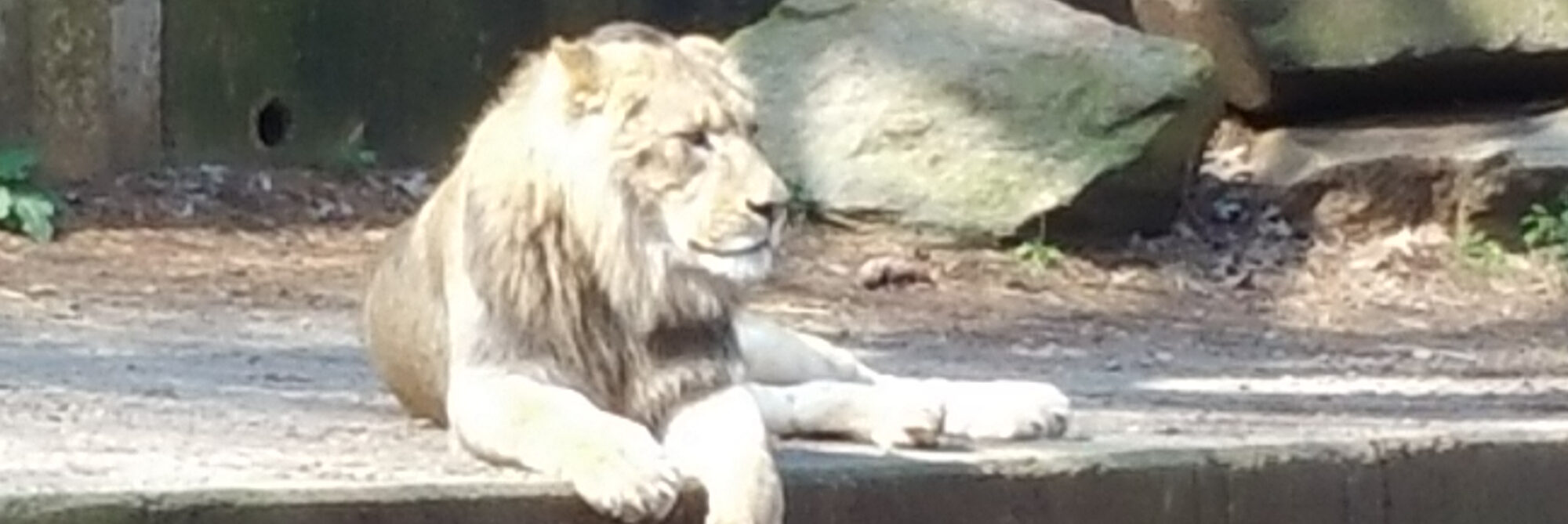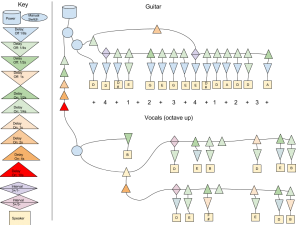It had been years since I’d been in a live chat on Twitter (I miss you #mathchat!), but I decided that this year I was going to participate in the #ClearTheAir Spring Semester. Live chats can be intimidating. It literally took me 30 minutes to tweet a response to the first question! I panicked when I saw that I was already 15 minutes late to the second question:
ACTUAL Q: What does it mean to choose Whiteness? In what ways did your family choose it? What do you think was lost? How does Whiteness impact your life? What do you notice about it now that you didn’t before? 2/ #ClearTheAir— ClearTheAirEdu (@ClearTheAirEdu) January 9, 2020
I hastily assembled a response that, looking back, is shallow and deflects from the real question. This tweet had triggered defense mechanisms I’m only recently coming to terms with. I didn’t perceive myself as choosing whiteness, and I’m only now realizing that the fact that I didn’t need to choose whiteness in order to reap its rewards is the very definition of white privilege.
When the chat returned to this topic the following week, a thread caught my attention with the following tweet:
I think I’m trying to figure out what “woman of color” means. @ClearTheAirEdu talked about closure. I want it. some definition when I’m between languages, between latinx countries, between Americanness, lighter on one side of the family and dark on the other, like the moon.— dulce-marie is still angry. (@DulceFlecha) January 16, 2020
Even now, this tweet conjures all sorts of emotions I’m not sure how to process. They seem to stem from a childhood memory, which I believe was from my 5th grade class. We were given an assignment to learn about our heritage and bring in a food that representative of that culture with the class.
I go home and tell my parents about the assignment. My dad identified himself as mostly German with a little bit of Swedish. My mom identified herself as mostly Yugoslavian with a little bit of Native American (Note: these statements are problematic on many levels, but this is about how I understood it at the time). I asked my mom if there was some kind of Yugoslavian food I could bring in. She pauses in thought for a moment, then says that it would be a lot of work and suggests that I bring something German instead. We head to the grocery store for a loaf of pumpernickel bread and some butter. It’s my first taste of “German food”, so I was kind of excited about it.
The day of our multicultural potluck, I present my story to the class and pass out my slices of pumpernickel. As I do so, I hear someone whispering something. I only make out one word, but that one word is enough to make me feel dizzy:
“Nazi“.
Did I really hear that? Did someone really say that? How could someone possibly come to that conclusion based on me being German? I tried as best as a kid could to put these thoughts out of my mind, but no 10 year old is really equipped to handle that level of guilt.
I think this is the origin for many of the defense mechanisms that would eventually develop into my own white fragility. I might even go so far as to say this was my childhood model for race in general. My dad’s side of the family was obviously “white”, but my mom’s side of the family was “less white”. What really drove this idea home was the fact that I started to see the difference within my own family.
My dad had three children from a previous marriage, and there were noticeable differences in skin tone between them and myself. They were “white”; I was “tan”. When they stayed out in the sun too long they turned “red”; when I stayed out in the sun too long I turned “brown”. My full-brother’s skin was like mine, so it was clearly linked through our mother. Even if my mom’s story about our Native American heritage was true, I knew that it was only a tiny amount. I didn’t even know how I’d begin to verify the story, but it explained an observable phenomena in my immediate family so I didn’t have any reason not to believe it.
I knew better than to try and identify myself as “Native American”, but it made me question where to drawn the line between “white” and “not white”. I came to the conclusion that the distinction was bogus and refused to make a choice at all. In reality, distancing myself from whiteness was just a defense mechanism to avoid a collection of painful memories.
When I think about “choosing whiteness”, I think I have to break it down specifically in the context of my family. Looking back, I chose to identify with my mom along multiple vectors. My mom and I were the left-handed liberals while my dad is a right-handed conservative. Since I associated my dad with both “white” and “male”, I thought perhaps it might be helpful for me to look at how I chose to incorporate the latter into my identity. I’m not sure of the exact moment, but know there was a distinct shift in my thinking about gender sometime in my teens.
Growing up, I rejected a lot of things that would be considered traditionally masculine. I spent more time playing with “My Little Pony” than “G.I. Joe”. I prefer musicals to football. However, I didn’t really distance myself from the word “male” the same way I did with the word “white”. I think this was made possible because I had strong feminist role models who taught me to look critically at gender. By “choosing male”, I accepted the fact that I was a male and that being one gave me privileges. Rather than distancing myself from the word “male”, I owned it. I acknowledged that “men” had a history of doing terrible things and that I would take it as a personal responsibility to challenge those statistics and disrupt the patriarchy however I could.
If “choosing white” were to be the analogue of this notion for race, I think the turning point for me reading Chris Emdin’s “For White Folks Who Teach in the Hood… and the Rest of Y’all Too”. By even purchasing this book, I had acknowledged that I was “white folk” and that I needed help understanding how to “teach in the hood”. In fact, this gives me an approximate date for “choosing whiteness”: November 14th, 2016. I think this his the first time I sincerely applied the label “white” to myself and acknowledged the social implications thereof.
Just reading wasn’t enough though, and what really drove this idea home for me was Emdin’s “homework”. He had challenged me to step out of my comfort zone to visit a Black barbershop and a Black church. Something about being the only white person in a “Black space” really puts one’s whiteness into perspective. The barbershop has become a routine occurrence now. I’m still processing the experience of visiting a Black church; I’ve never felt so simultaneously out of place and welcomed at the same time.
Coming to terms with what it meant to be white was only the beginning. Emdin also made me reassess significant aspects of my sense of self-identify by using the word “neoindigenous” to describe students. He had instilled this idea that the classroom didn’t belong to me, but my students. It forced me to take a hard look at what it really meant to be “Indigenous” and come to terms with the fact that I wasn’t.
Being Native American was never a matter of “blood” as I thought when I was young. It’s a matter of tribal membership, which I clearly do not meet the definition of. Even if my family story was true, I had long been socialized into the culture of the “Colonizers”. I have no right to call myself “Native American”. This concept that the relationship between Indigenous and colonialism was completely separate from “race” forced me come face-to-face with a very uncomfortable truths about my own heritage.
Even if my family story was true (and I have little evidence to back it up), it implies that my white ancestors traveled across the country during the western expansion. These white ancestors most likely came into contact with my supposed Native American ancestors somewhere around present day Idaho. Their decedents most likely traveled south through Utah and Arizona to end up in California, while gradually assimilating into white society.
Here’s the part that I struggle with. In order for this Native American ancestry to be true, it also implies that my white ancestors were complicit in the colonization and genocide of the Indigenous people. This is a heavy burden to bear, knowing that some of my ancestors may have committed one of the greatest atrocities in American history against the Indigenous people who may also be my ancestors. I feel like my very DNA is filled with violent contradictions. Maybe that’s what it really means to “choose whiteness”.
During the #ClearTheAir Zoom with Paul Gorski, he made a remark about “embracing whiteness” being akin to “self-hate”. I felt a little uncomfortable about the statement until I started digging into the language a little deeper. First, I wasn’t trying to “embrace” whiteness. I was just trying to “understand” it and “accept” it. Second, it helped me recognize that the feelings I carried towards whiteness weren’t characterized by “hate”. I felt guilt, and I felt shame, but not “hate”.
To “choose whiteness”, for me, was to accept the all the moral contradictions in the last 200 millennia of human history. Not only am I likely to be a decedent of murderers, rapists, colonizers, slavers, and thieves, but I am also likely a decedent of their victims. I will not let the crimes of my ancestors define me, but I will acknowledge that their actions have left me a heavy burden to carry. I will prove myself better than them by fighting to undo the damage they have caused because that’s the kind of human I want to be.
I hope this answer finally does justice to the question that prompted it.
It seems strange to think that so many of my misconceptions about race could be tied back to a single childhood memory, but maybe that’s how this process of socialization works. I think I now have an obligation to find out how much of my family story is really true. I promise to continue digging and see what else I discover about myself.
I’d like to thank the following people who have both challenged me and given me inspiration on this journey (in no particular order):
- Valeria Brown (@ValeriaBrownEdu)
- Chris Emdin (@chrisemdin)
- Dulce-Marie Flecha (@DulceFlecha)
- Paul Gorski (@pgorski)
- Ibram X. Kendi (@DrIbram)
- Debbie Reese (@debreese)
- Rebecca Nagle (@rebeccanagle)
- Jaime Gerding (@Jaime_Gerding)
- Christie Nold (@ChristieNold)
- Kelly Wickham Hurst (@mochamomma)
- Nikole Hannah Jones (@nhannahjones)
- Marian Dingle (@DingleTeach)
- Christina Torres (@biblio_phile)
- Allison Krasnow (@allison_krasnow)
- Annie Perkins (@anniek_p)
- Tom Rademacher (@MrTomRad)
- shea martin (@sheathescholar)
- Tricia Ebarvia (@triciaebarvia)
- Mr. Kit (@MrKitMath)
- Joel Garza (@JoelRGarza)
- Tyrone Martinez (@teachnext_tmb)
- and everyone else who participated in the #ClearTheAir spring semester!

